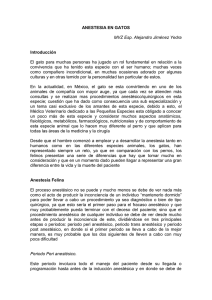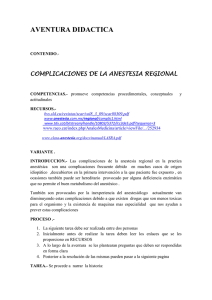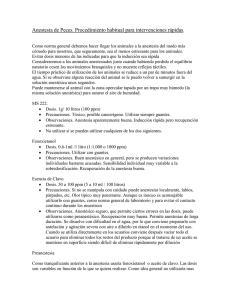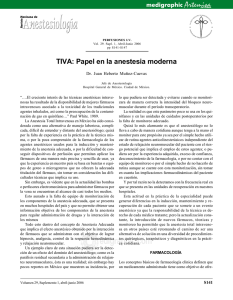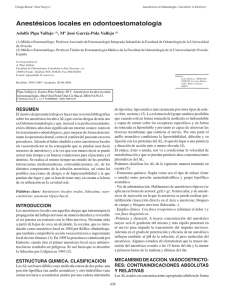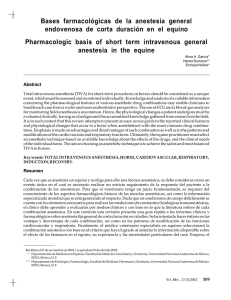CHUQUIPOMA_JOEL_ANESTESIA_INHALATORIA_CANIS_FAMILIARIS.pdf
Anuncio
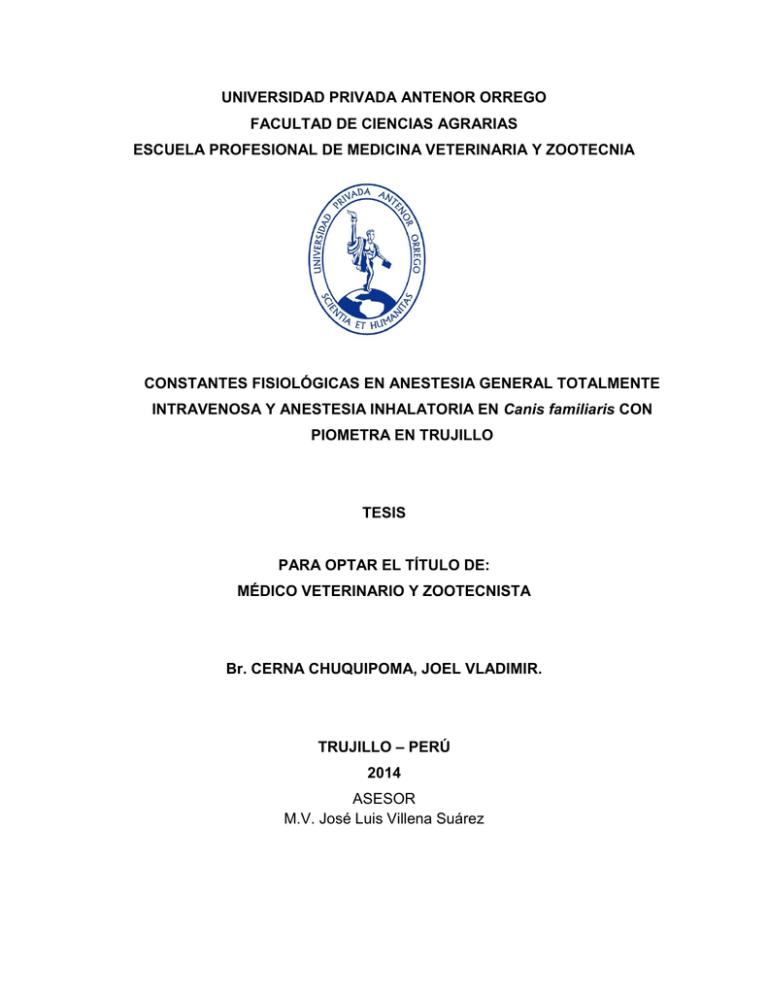
UNIVERSIDAD PRIVADA ANTENOR ORREGO FACULTAD DE CIENCIAS AGRARIAS ESCUELA PROFESIONAL DE MEDICINA VETERINARIA Y ZOOTECNIA CONSTANTES FISIOLÓGICAS EN ANESTESIA GENERAL TOTALMENTE INTRAVENOSA Y ANESTESIA INHALATORIA EN Canis familiaris CON PIOMETRA EN TRUJILLO TESIS PARA OPTAR EL TÍTULO DE: MÉDICO VETERINARIO Y ZOOTECNISTA Br. CERNA CHUQUIPOMA, JOEL VLADIMIR. TRUJILLO – PERÚ 2014 ASESOR M.V. José Luis Villena Suárez RESUMEN El presente estudio de investigación fue realizado en la ciudad de Trujillo, evaluándose las constantes fisiológicas durante la anestesia general totalmente intravenosa y anestesia inhalatoria en 16 Canis familiaris con piometra por cada protocolo anestésico. Los protocolos estuvieron compuestos: TIVA; por ketamina, xilacina y atropina y el de anestesia inhalatoria inducido con ketamina y propofol y como mantenimiento con el agente inhalatorio sevofluorano al 2 % vehiculado en oxígeno al 100 %; donde ambos permitieron alcanzar el plano anestésico adecuado para la realización de la ovariohisterectomía. La frecuencia cardiaca, porcentaje de saturación de la sangre arterial, temperatura corporal y presiones arteriales en los periodos anestésico y post anestésico en el protocolo con inhalatoria se incrementaron. Las frecuencias respiratorias, temperatura corporal, porcentaje de saturación de la sangre arterial y las presiones arteriales de las pacientes durante los periodos anestésicos y post anestésico en el protocolo TIVA disminuyeron, la frecuencia cardiaca se incrementó. El tiempo de llenado capilar de las pacientes no varió en ninguno de los periodos ni protocolos. Los tiempos de decúbito esternal y en pie durante el periodo post anestésico en el protocolo TIVA fueron mayores en comparación a los tiempos en el protocolo con anestesia inhalatoria. ABSTRACT This research study was conducted in the city of Trujillo, evaluating the physiological constant during general anesthesia and intravenous fully inhalation anesthesia in 16 Canis familiaris with pyometra for each anesthetic protocol. The protocols were composed: TIVA, ketamine xylazine and atropine and the inhalation anesthesia induced with ketamine and propofol as maintenance with inhalational agent sevoflurane 2% conveyed in 100% oxygen, which both helped achieve adequate anesthetic plane for performing ovariohysterectomy. Heart rate, percent saturation of arterial blood, body temperature and blood pressure in the anesthetic and post anesthetic periods in the protocol were increased inhalation. The respiratory rate, body temperature, percent saturation of arterial blood and blood pressures of the patient during anesthesia and post- anesthetic protocol periods in TIVA decreased, increase the heart rate. The capillary refill of the patients did not differ in any of the periods and protocols. Times sternal recumbency and standing during the period after the TIVA anesthetic protocol were higher compared to the times when the protocol with inhalation anesthesia. NOTA: Tesis no autorizada de publicación, para obtener más detalle de la tesis, acercarse a Sala de Tesis de la Biblioteca Central de la Universidad Privada Antenor Orrego, de la Ciudad de Trujillo.
